
Feb 26
/
Pedro Schicchi
Crop Forecast: Soy Brazil - 2024 02 26
Back to main blog page
"Update on hEDGEpoint's numbers for Brazilian soybeans crop"
Brazil Soybeans - Crop Estimates Update
Right to the point
Another month and further cuts were made to the Brazilian production of soybeans. This time, however, it seems like the changes are getting smaller on a month-over-month basis.
One important divergence remains in the market. While USDA maintains a high number 156M ton (-1M ton MoM), Conab has trimmed its estimates to 149.4M ton (-6M ton MoM), which is more in line with other players. Following these important reports, we aim to update our crop number and show a bit of what is behind it. Let us give you the good stuff first: hEDGEpoint’s February crop number is 150.1M ton, down from 153.4M ton January.
One of the reasons was further consolidation of losses due to a poor start to the crop. However, weather conditions were better in January, which helped to stanch the bleeding.
Brazil Soybean - Area, Yield and Production (M ha, ton/ha, M ton)
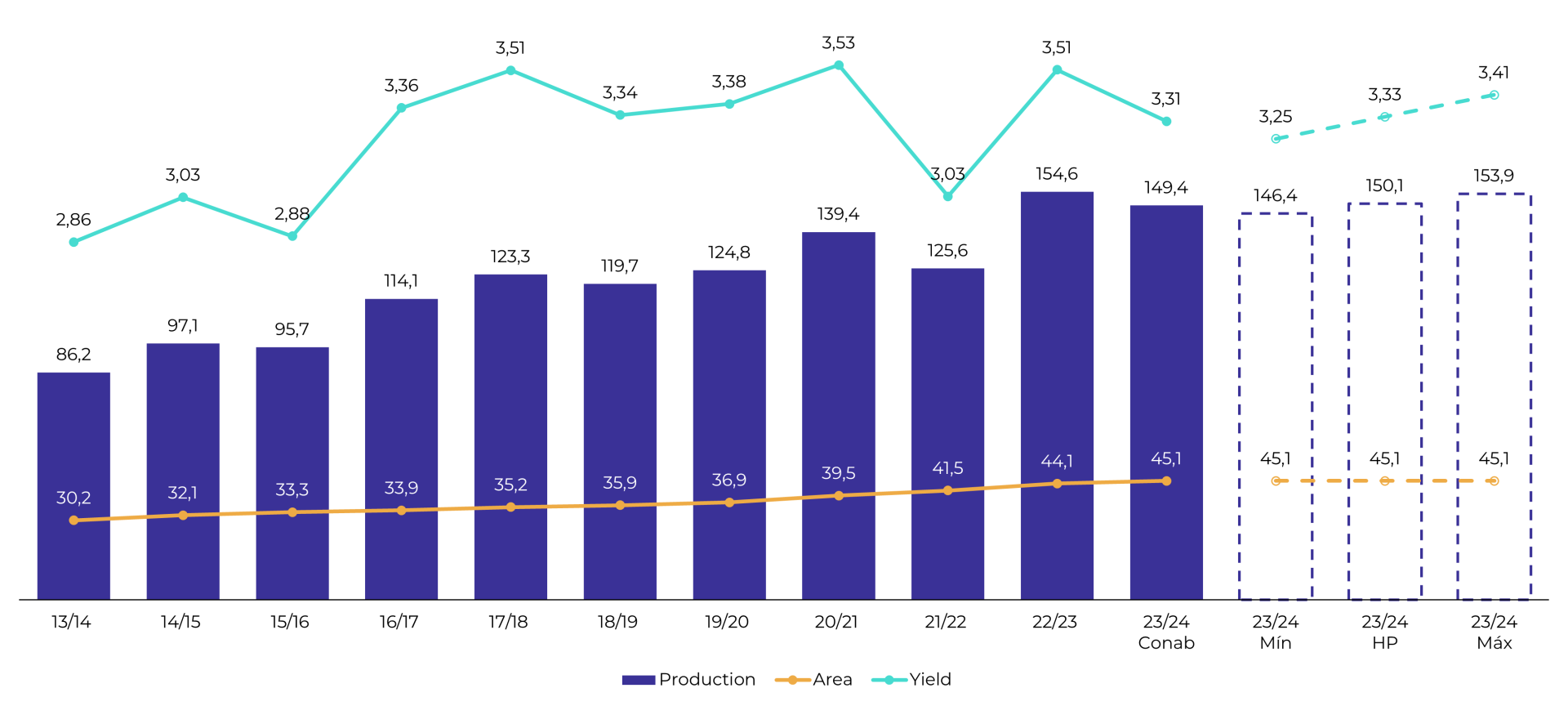
Source: Conab, hEDGEpoint
Phenology
Soybean Brazil - Phenology in Feb-18
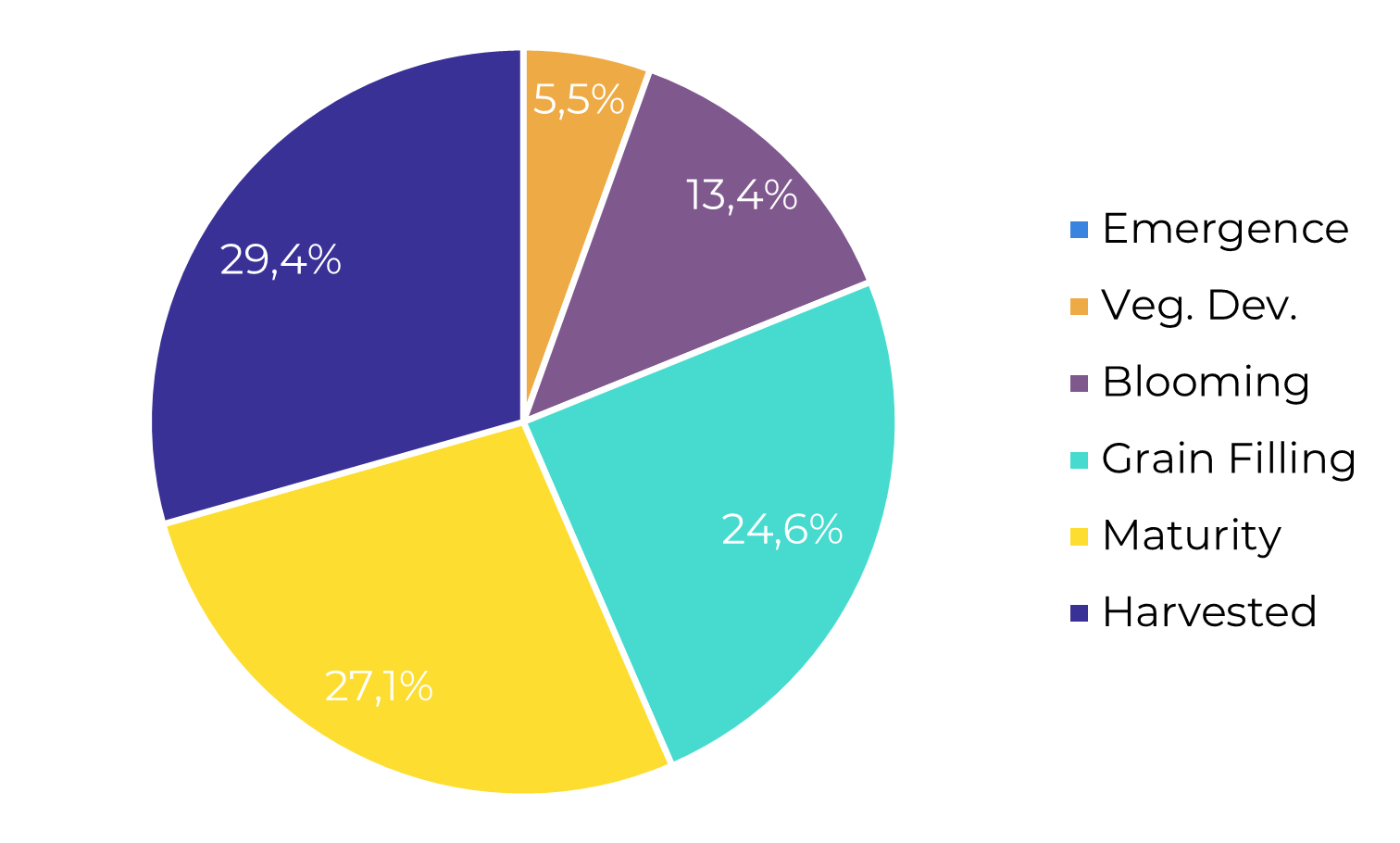
Source: Conab, hEDGEpoint
During last month’s revision, we were right at the “eye of the storm”. This time, though we are not out of the woods just yet, the number of fields that already reached maturity or harvested is much greater.
Still, there is a significant share of crops in the reproductive stages. This is especially true for producing states in the extremes (Rio Grande do Sul and MATOPIBA), which plant and harvest later than others.
The consequence is that, as less crops are “at risk”, the changes in new revisions of the crop numbers should start to diminish.
Weather
Temperature Anomaly (°C from normal average)
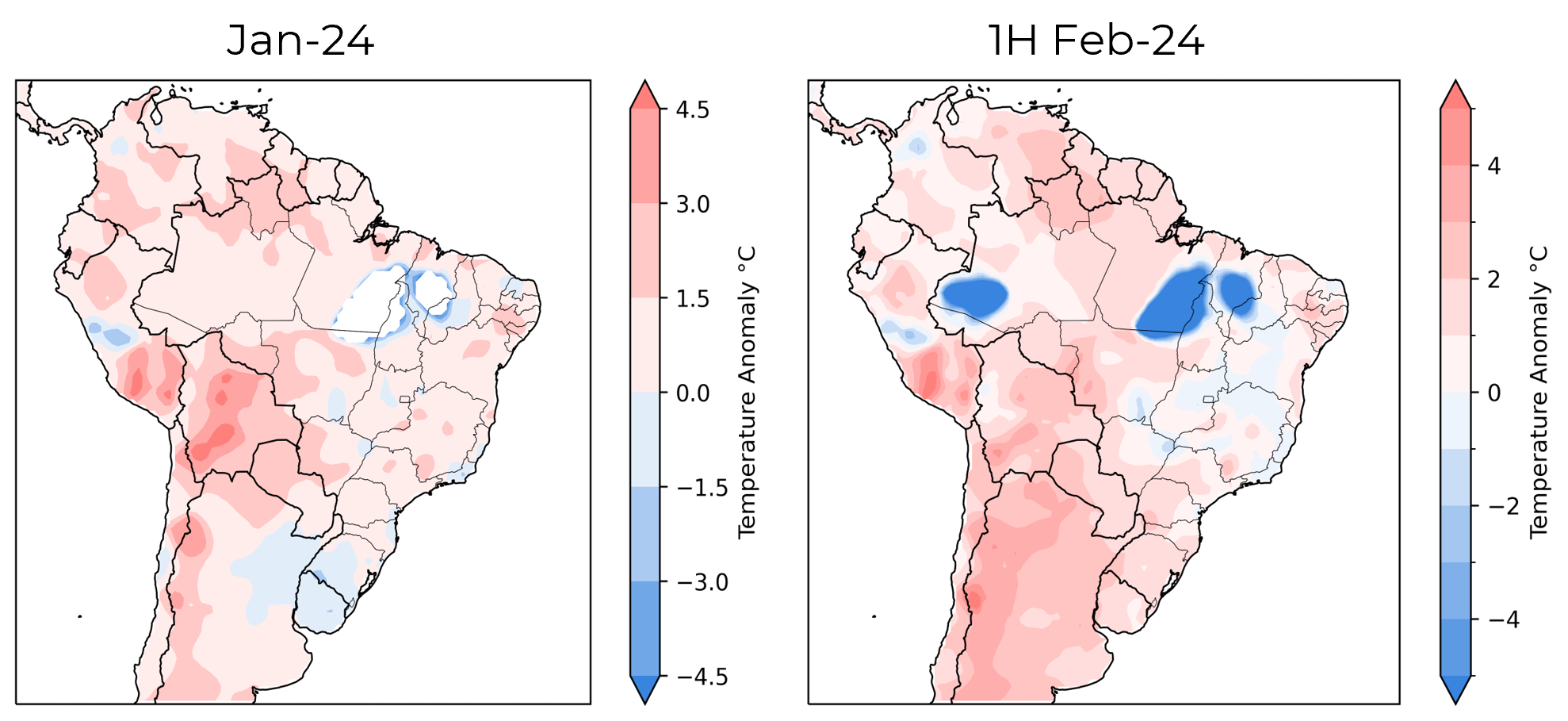
Precipitation (mm/day on average)
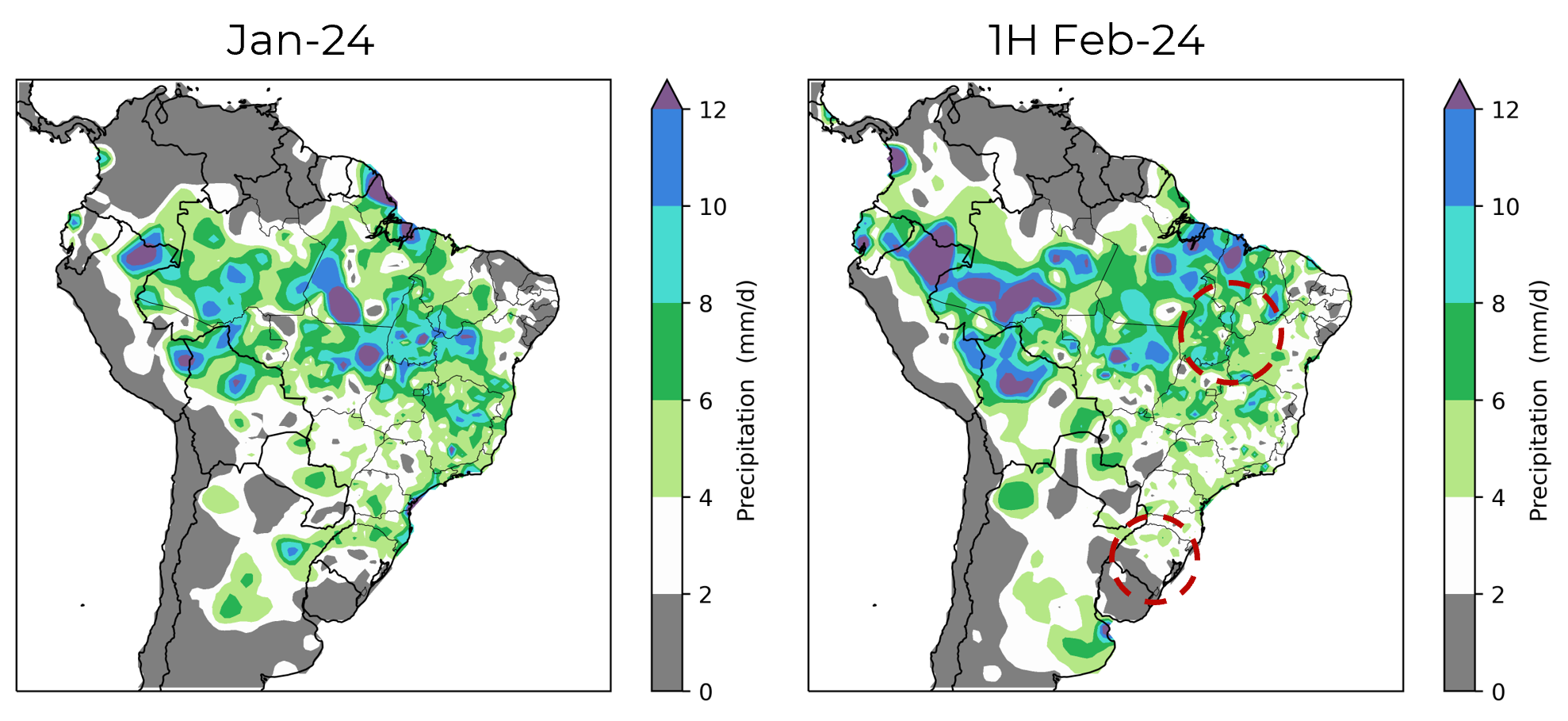
Source: NOAA, hEDGEpoint. 1H = First half
Climatic conditions in January represented an improvement over December in most regions, arguably helping to prevent further losses at the national level.
Temperatures were milder during the month, and precipitation was higher on average, though not in all regions.
Temperatures were milder during the month, and precipitation was higher on average, though not in all regions.
As we move into February, precipitation remains favorable, though not everywhere. Amongst the two regions with the highest share of crops “at risk”, average rainfall levels through the month are better in MATOPIBA, vs Rio Grande do Sul. Hotter-than-normal temperatures continue to be the norm in this cycle.
On average, a soybean plant needs ~8 mm/day of rainfall to thrive in the reproductive stages of its development.
NDVI
Finally, the last input considered in our models is the Normalized Difference Vegetation Index (NDVI). NDVI is used to quantify vegetation greenness and is useful in understanding vegetation density and assessing changes in plant health (USGS). Though not perfect, the measure has a good correlation with yields.
Several important blocs of states in Brazil, despite being worse than last year, have remained close to the 20Y average throughout the season. Examples are Mato Grosso, Goiás, Minas Gerais, and Mato Grosso do Sul, São Paulo, and Paraná. Of course, this is true in the aggregate, but may not be true when speaking of specific regions within these states.
The extremes (MATOPIBA and Rio Grande do Sul) had a very poor start to the season but recovered once we approached January and weather conditions improved.
NDVI - Mato Grosso, Goiás, Minas Gerais
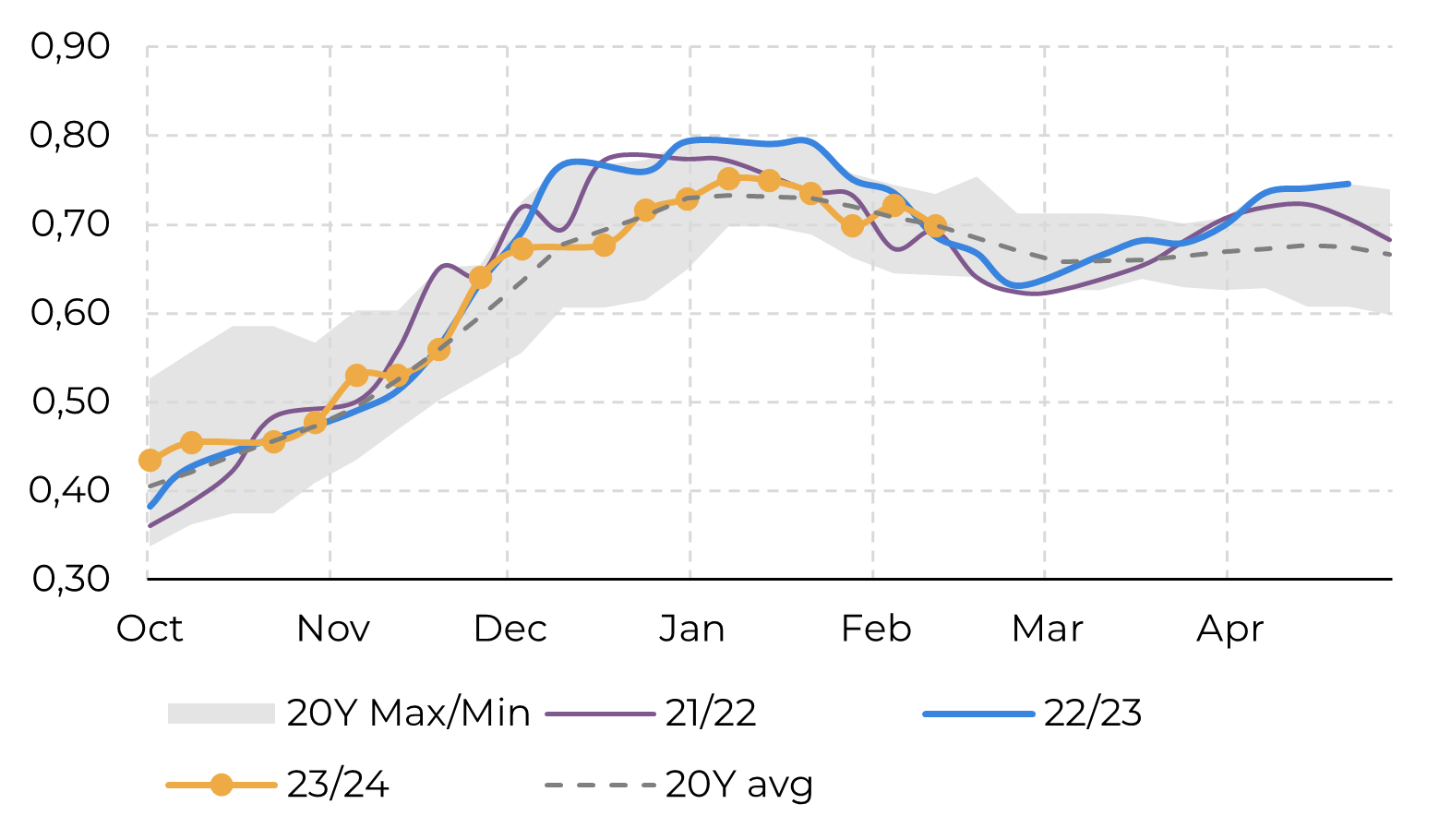
NDVI - Mato Grosso do Sul, São Paulo and Paraná
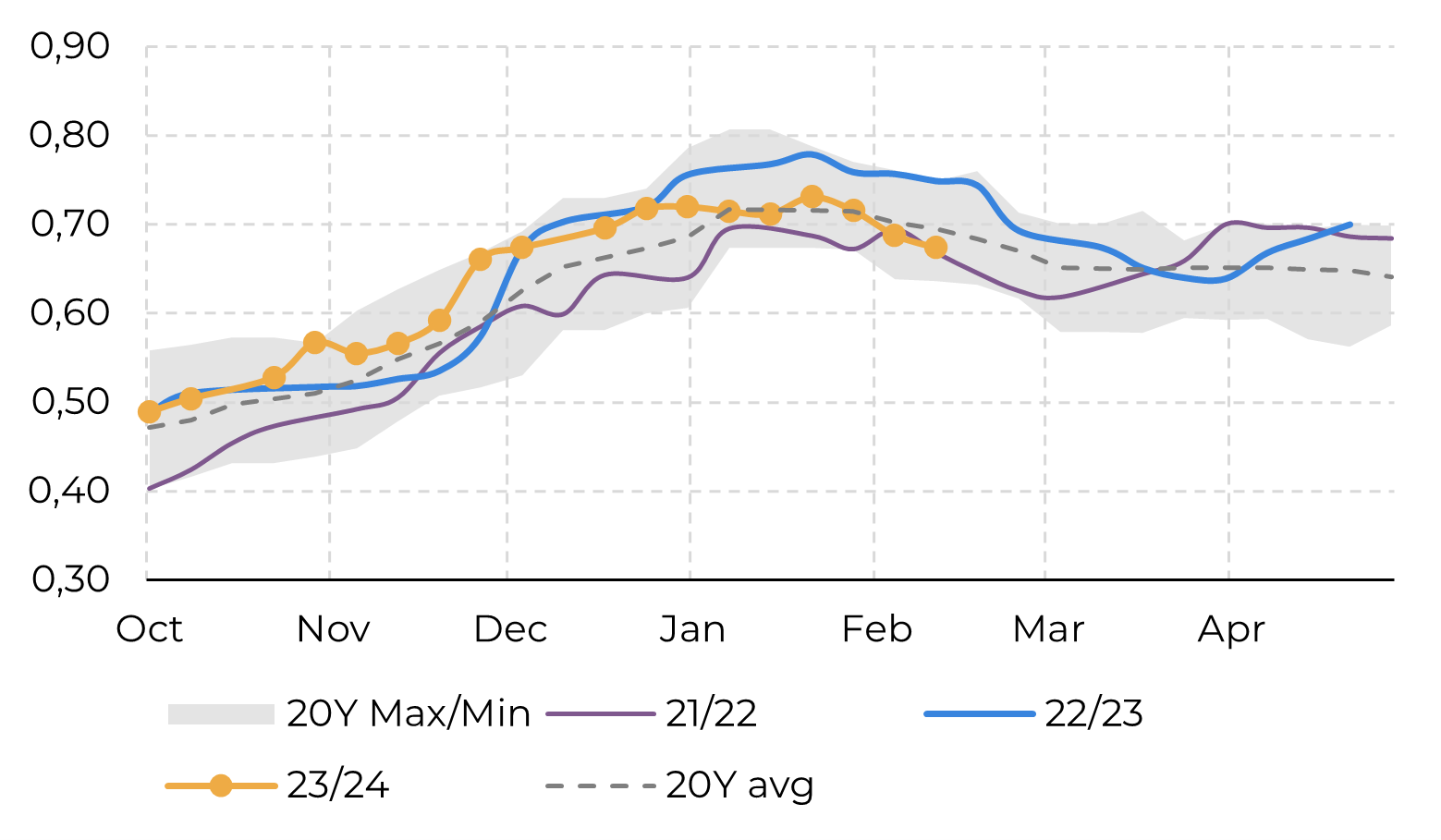
Source: NASA, hEDGEpoint
NDVI - MATOPIBA
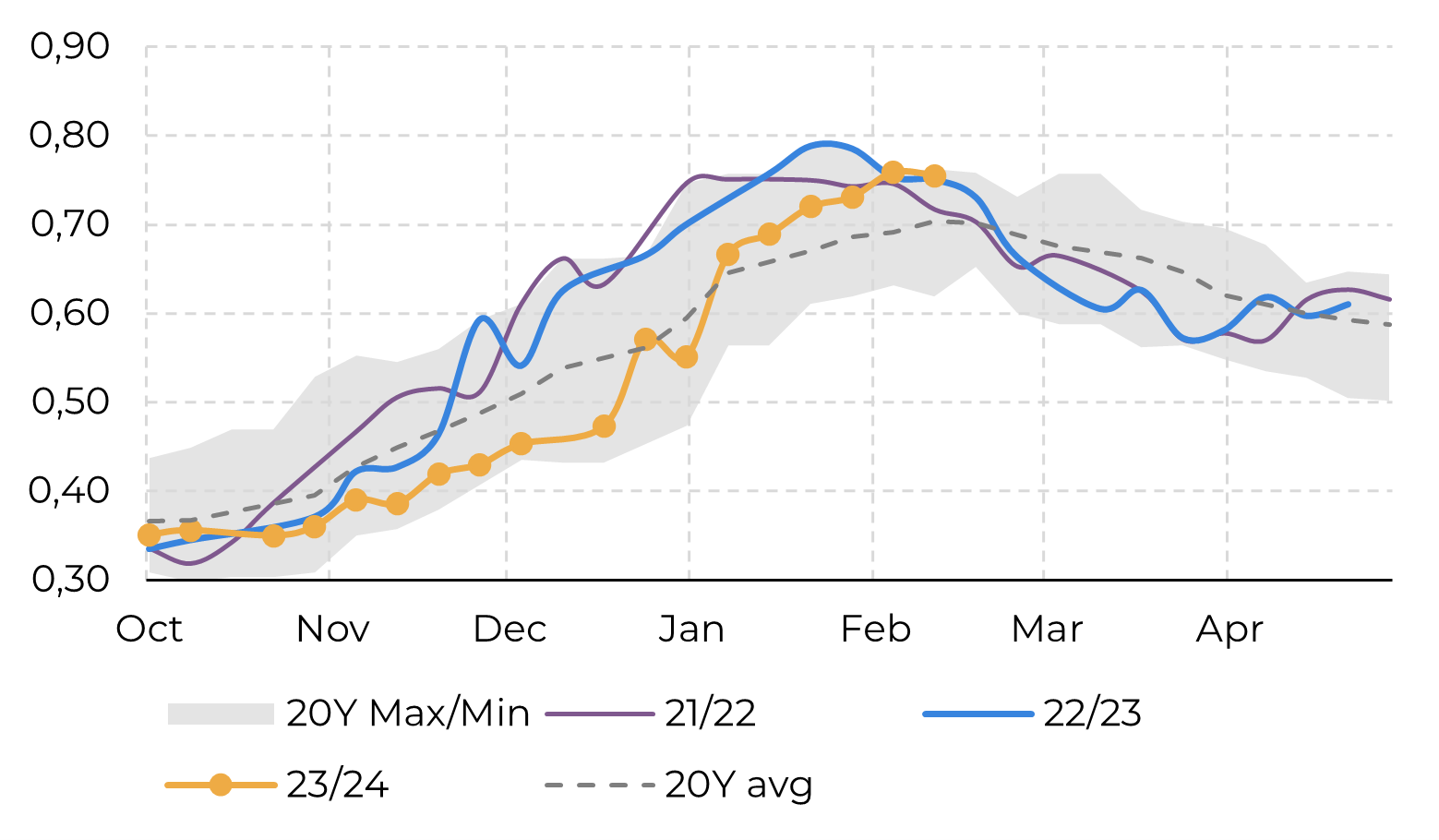
NDVI - Santa Catarina, Rio Grande do Sul
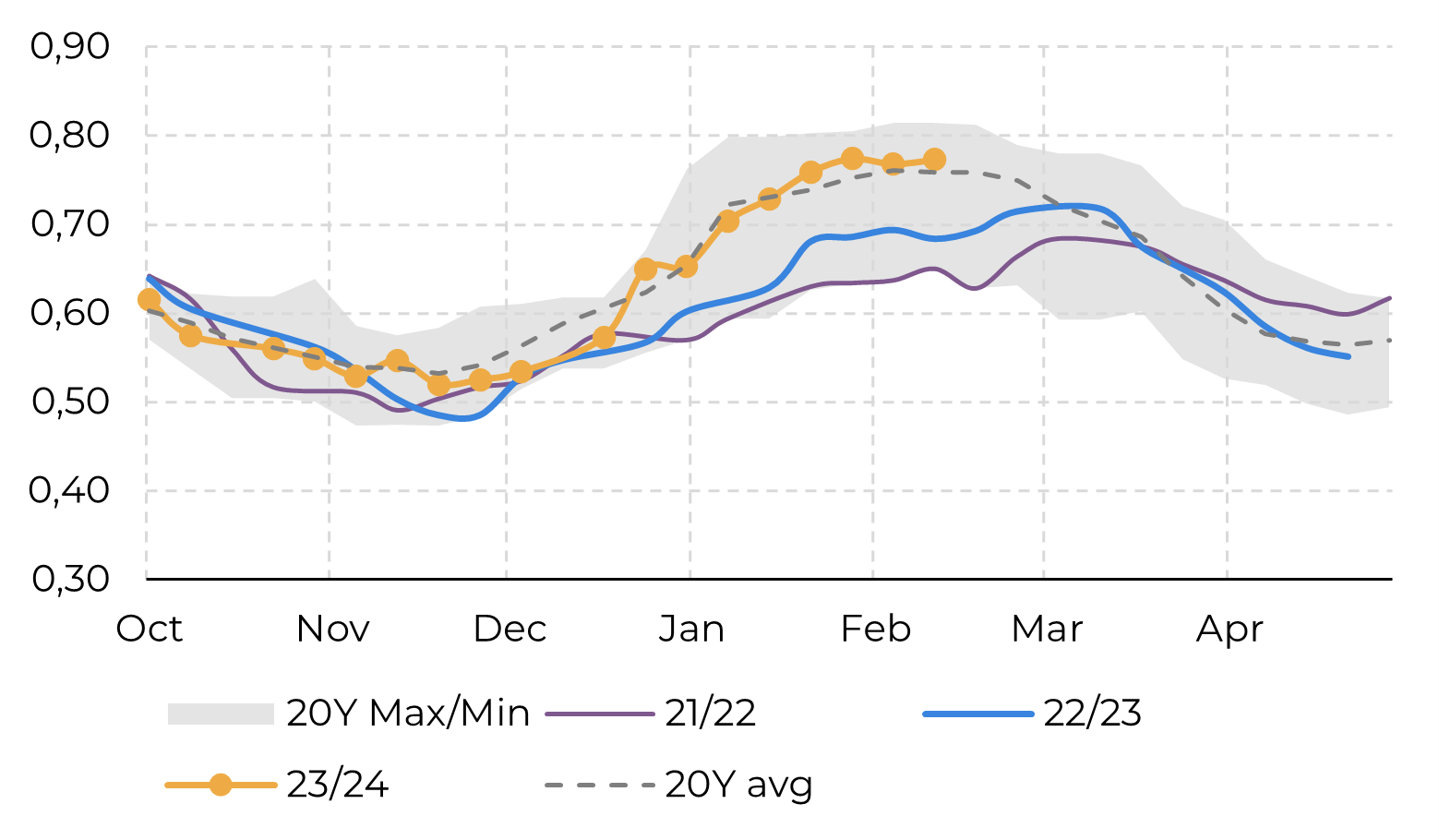
Source: NASA, hEDGEpoint
In Summary
The gist of it is that, in our opinion, numbers are continuing to fall, and not without reason. However, better conditions have stanched the bleeding to some extent and, with a smaller share of production at risk, changes to the estimates should start to get smaller as we move forward.
Weekly Report — Grains
Written by Pedro Schicchi
pedro.schicchi@hedgepointglobal.com
pedro.schicchi@hedgepointglobal.com
Reviewed by Victor Arduin
victor.arduin@hedgepointglobal.com
victor.arduin@hedgepointglobal.com
www.hedgepointglobal.com
Disclaimer
This document has been prepared by hEDGEpoint Global Markets LLC and its affiliates ("HPGM") exclusively for informational and instructional purposes, without the purpose of creating obligations or commitments with third parties, and is not intended to promote an offer, or solicitation of an offer, to sell or buy any securities or investment products. HPGM and its associates expressly disclaim any use of the information contained herein that may result in direct or indirect damage of any kind. If you have any questions that are not resolved in the first instance of contact with the client (client.services@hedgepointglobal.com), please contact our internal ombudsman channel (ouvidoria@hedgepointglobal.com) or 0800-878-8408 (for clients in Brazil only).
Contact us
hedgepointhub.support@hedgepointglobal.com
ouvidoria@hedgepointglobal.com
Funchal Street, 418, 18º floor - Vila Olímpia São Paulo, SP, Brasil
Check our general terms and important notices.
This page has been prepared by Hedgepoint Schweiz AG and its affiliates (“Hedgepoint”) solely for informational and instructional purposes, without the purpose of instituting obligations or commitments to third parties, nor is it intended to promote an offer, or solicitation of an offer of sale or purchase relating to any securities, commodities interests or investment products. Hedgepoint and its associates expressly disclaim any use of the information contained herein that directly or indirectly result in damages or damages of any kind. Information is obtained from sources which we believe to be reliable, but we do not warrant or guarantee the timeliness or accuracy of this information. The trading of commodities interests such as futures, options, and swaps involves substantial risk of loss and may not be suitable for all investors. You should carefully consider wither such trading is suitable for you in light of your financial condition. Past performance is not necessarily indicative of future results. Customers should rely on their own independent judgement and/or advisors before entering in any transaction.Hedgepoint does not provide legal, tax or accounting advice and you are responsible for seeking any such advice separately.Hedgepoint Schweiz AG is organized, incorporated, and existing under the laws of Switzerland, is filiated to ARIF, the Association Romande des Intermédiaires Financiers, which is a FINMA-authorized Self-Regulatory Organization. Hedgepoint Commodities LLC is organized, incorporated, and existing under the laws of the USA, and is authorized and regulated by the Commodity Futures Trading Commission (CFTC) and a member of the National Futures Association (NFA) to act as an Introducing Broker and Commodity Trading Advisor. HedgePoint Global Markets Limited is Regulated by the Dubai Financial Services Authority. The content is directed at Professional Clients and not Retail Clients. Hedgepoint Global Markets PTE. Ltd is organized, incorporated, and existing under the laws of Singapore, exempted from obtaining a financial services license as per the Second Schedule of the Securities and Futures (Licensing and Conduct of Business) Act, by the Monetary Authority of Singapore (MAS). Hedgepoint Global Markets DTVM Ltda. is authorized and regulated in Brazil by the Central Bank of Brazil (BCB) and the Brazilian Securities Commission (CVM). Hedgepoint Serviços Ltda. is organized, incorporated, and existing under the laws of Brazil. Hedgepoint Global Markets S.A. is organized, incorporated, and existing under the laws of Uruguay. In case of questions not resolved by the first instance of customer contact (client.services@Hedgepointglobal.com), please contact internal ombudsman channel (ombudsman@hedgepointglobal.com – global or ouvidoria@hedgepointglobal.com – Brazil only) or call 0800-8788408 (Brazil only).Integrity, ethics, and transparency are values that guide our culture. To further strengthen our practices, Hedgepoint has a whistleblower channel for employees and third-parties by e-mail ethicline@hedgepointglobal.com or forms Ethic Line – Hedgepoint Global Markets.Security note: All contacts with customers and partners are conducted exclusively through our domain @hedgepointglobal.com. Do not accept any information, bills, statements or requests from different domains and pay special attention to any variations in letters or spelling, as they may indicate a fraudulent situation.“HedgePoint” and the “HedgePoint” logo are marks for the exclusive use of HedgePoint and/or its affiliates. Use or reproduction is prohibited, unless expressly authorized by HedgePoint. Furthermore, the use of any other marks in this document has been authorized for identification purposes only. It does not, therefore, imply any rights of HedgePoint in these marks or imply endorsement, association or seal by the owners of these marks with HedgePoint or its affiliates.
We have updated our Terms & Conditions to reflect improvements to our platform, data handling practices, and the overall experience we provide to our clients.
To continue using the Hedgepoint HUB, please review and accept the updated terms.

